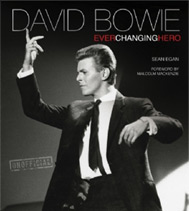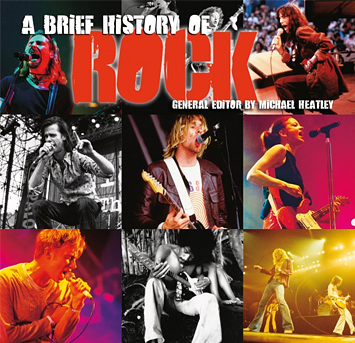XV), Odette Turba-Rabier (Le feu), André Vessières (La fauteuil), Yvon le Marc’Hadour (L’horloge comtoise), Joseph Peyron (La théière), Martha Angelici (La princesse), Maurice Prigent (Le petit vieillard) Personalities | Maurice Ravel | Modern Era | Opera ...
paying to the clocks, makes two immediate sales. Concepcion and Ramiro return. With one last effort Inigo is freed. It is the muleteer’s turn for love. Personalities | Maurice Ravel | Modern Era | Opera ...
(Mo-res’ Ra-vel’) 1875–1937 French composer Ravel is often described (like Debussy, but still more misleadingly) as an ‘Impressionist’, but Ravel’s music is in fact precisely and delicately crafted, subtly perfect in its artifice (in the best sense of the word). Influenced by Emmanuel Chabrier (1841–94), Satie and his close friend Stravinsky, attracted to Spain temperamentally (he never visited ...
1875–1937, French A meticulous craftsman whose constant reworking and rewriting may have accounted for his relatively small body of work, Ravel composed music that consciously moved away from the influence of Richard Wagner. Along with Claude Debussy, he invented a highly personalized French style. Ravel also imbued his music with his love for Spanish culture (perhaps because his ...
Composers of the early twentieth century sought out further percussion instruments to add to their sound palette. Berg’s Three Pieces for Orchestra (1913) requires a xylorimba: a composite instrument, with a top end sounding like a xylophone, the bass end like a marimba. Walton’s Façade (1926) requires wood blocks: stemming from Africa, these are a series of resonant ...
Bugle Best known in its military guise, the bugle is one of the simplest of brass instruments in terms of construction, but it is very difficult to play. The single tube of metal has no valves to help create different notes, so players have to do all the work by changing their embouchure – a combination of the ...
By the early eighteenth century, a harp furnished with pedals had been developed in Bavaria. In this instrument, each of the foot-operated pedals directed a mechanism that could sharpen every string playing notes of the same name. Initially there were five such pedals, controlling C, D, F, G and A. By the end of the ...
the musical language of the orchestra has changed radically in the last 100 years, it is largely in the percussion section that new instruments and sonorities have been introduced. Ravel writes for swanee whistle in L’enfant et les sortilèges (1925) to create the effect of night sounds. The swanee whistle is a pipe with a plunger in the end so ...
Adolphe Sax’s most famous invention, the saxophone, was patented in 1846. This new family of instruments is a cross between the single-reed woodwind family and the keyed brass instruments of the early nineteenth century such as the ophicleides, which are said to have influenced him. Each member of the family combines the single reed and mouthpiece, familiar ...
The saxophone occupies an unusual position in that it is a bespoke instrument that has barely changed since its creation. Although it does not occupy the position in the orchestra its creator had envisaged, Adolphe Sax’s invention has played a central part in music ever since it burst on to the scene in the 1840s. Sax’s father, Charles, ...
to develop a significant role there. At this time, various composers made use of the snare drum, including Gioachino Rossini (1792–1868) in La gazza ladra (1816) and Maurice Ravel (1875–1937) in Boléro (1928), where the snare drum plays an ostinato rhythm throughout the work. Carl Nielsen also used it in his Fifth Symphony (1921–22), in which the snare drummer ...
The snare drum is cylindrical. It has a wooden or metal frame with parchment stretched across either end. Stretched across the lower of these is a metal ‘snare’ which rattles when the drum is beaten. Another name for snare drums is ‘side drums’ because they were carried at the hip by army drummers. Snare drums are often used in Handel’s Music for ...
standard instrument, has a narrower bore and more penetrating tone. It is often used to play Baroque parts but has also been specifically written for by composers including Maurice Ravel (1875–1937), Benjamin Britten (1913–76) and Stravinsky. The piccolo trumpet in Bb sounds an octave above the standard trumpet. This was originally developed by Adolphe Sax in the 1840s and revived ...
The tuba is essentially a large, valved bugle, designed to take the bass part in an orchestra or band. Like the trumpet, it is sounded by buzzing the lips into a mouthpiece. It is conically bored, like the horn, and consequently has a smooth, velvety sound. History The tuba is a youngster among brass instruments; ...
Many musical cultures have made use of wooden concussion sticks. Their history goes back to ancient Egypt and Mesopotamia, and they are played by the Aboriginal people of Australia. This group of instruments includes pairs of sticks struck together like claves (3 cm/1 in wide, 20 cm/8 in long), which are cylindrical wooden dowels widely used in Latin-American, ...
AUTHORITATIVE
An extensive music information resource, bringing together the talents and expertise of a wide range of editors and musicologists, including Stanley Sadie, Charles Wilson, Paul Du Noyer, Tony Byworth, Bob Allen, Howard Mandel, Cliff Douse, William Schafer, John Wilson...
CURATED
Classical, Rock, Blues, Jazz, Country and more. Flame Tree has been making encyclopaedias and guides about music for over 20 years. Now Flame Tree Pro brings together a huge canon of carefully curated information on genres, styles, artists and instruments. It's a perfect tool for study, and entertaining too, a great companion to our music books.

David Bowie
Fantastic new, unofficial biography covers
his life, music, art and movies, with a
sweep of incredible photographs.


